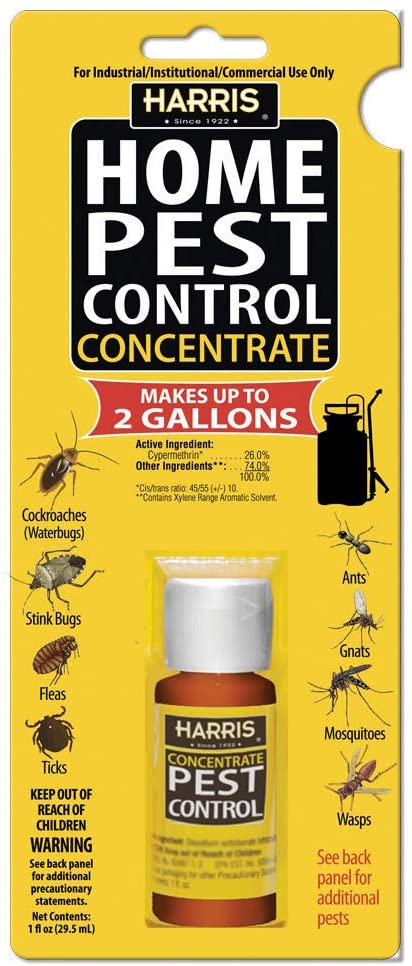Bed Pest Therapy Break Down: Contrasting Chemical Vs. Non-Chemical Solutions
In the realm of pest control, specifically when managing the consistent concern of bed bugs, the choice in between chemical and non-chemical treatment solutions can be a crucial one. Both approaches provide distinct benefits and disadvantages, affecting variables such as effectiveness, safety and security considerations, and general cost. By taking a look at the nuanced information of each approach, a more clear understanding of which course to go after in resolving a bed insect problem can be obtained.
Efficiency of Chemical Therapies
Chemical therapies for bed pest invasions have been extensively recognized for their powerful and fast effectiveness in eradicating these insects. When considering the effectiveness of chemical treatments, it is important to recognize that they can offer a quick and extensive option to a bed insect issue. Professional pest control specialists often count on pesticides to target bed bugs at various phases of their life cycle, including grownups, fairies, and eggs. These chemicals commonly function by interrupting the bed insects' nerves, causing paralysis and eventual fatality.
In addition, chemical therapies have the benefit of using recurring results, meaning that they can remain to eliminate bed insects also after the first application. This recurring activity is specifically useful in combating any type of prospective re-infestations. In addition, the quick action of chemical treatments can bring alleviation to people facing extreme bed bug problems, enabling them to reclaim control of their living spaces swiftly.
Security Interest In Chemical Solutions
One critical aspect that needs cautious consideration when utilizing chemical options for bed pest treatment is making sure the security of occupants and the setting. Direct exposure to certain chemicals used in bed pest treatments can lead to respiratory problems, skin irritation, or other unfavorable responses, especially in people with pre-existing conditions or level of sensitivities.
Moreover, the ecological effect of chemical solutions is another substantial consideration. Some chemicals used in bed pest therapies may be unsafe to beneficial bugs, wildlife, and ecological communities if they seep into the soil or water supply. It is vital to use chemical therapies deliberately, complying with safety standards, and considering much less hazardous choices to alleviate these risks and ensure the safe and reliable monitoring of bed pest infestations.
Benefits of Non-Chemical Methods
Considering the potential security problems and environmental effect connected with chemical services for bed pest treatment, discovering non-chemical approaches provides a promising option with numerous distinct benefits. Non-chemical therapies are environmentally friendly, as they do not add to air or water contamination, making them a sustainable choice for parasite control.
Additionally, non-chemical options can be efficient in targeting bed bugs, including hard-to-reach locations where chemical treatments might not penetrate - A1 pest control services charlotte. Techniques such as heat treatment, vacuuming, vapor cleaning, and bed mattress coverings give comprehensive obliteration without the use of unsafe chemicals.
Limitations of Non-Chemical Treatments

In addition, non-chemical treatments typically require multiple applications to accomplish successful eradication. This can be taxing and might not constantly assure full elimination of all bed insects and their eggs, particularly in hard-to-reach or hidden areas.
Moreover, the success of non-chemical therapies heavily depends on proper execution and thoroughness, which can be testing for individuals without professional experience. Inadequate application of non-chemical techniques might result in insufficient removal, leading to persistent invasions and the need for additional therapies.
For that reason, while non-chemical therapies have their view publisher site advantages, it is vital to recognize these restrictions and consider them when figuring out the most reliable strategy for taking care of bed insect problems.
Expense Comparison: Chemical Vs. Non-Chemical Options
Offered the restrictions associated with non-chemical treatments, a necessary element to review in the context of bed insect management is the expense contrast between chemical and non-chemical alternatives. Chemical therapies normally involve the application of pesticides by specialists, which can vary from $250 to $900 per room, depending upon the seriousness of the infestation and the dimension of the area to be treated. In comparison, non-chemical treatments like warmth therapy or steam can be a lot more expensive, with costs ranging from $1,000 to $6,000 for a whole home. While the preliminary expense of chemical therapies might appear lower, multiple therapies may be called for to completely get rid of the invasion, potentially enhancing the total price. On the other hand, non-chemical options may provide a much more lasting and eco-friendly solution, although they can be cost-prohibitive for some individuals. Eventually, when thinking about the cost of bed bug treatment options, it is necessary to evaluate the upfront expenses versus the efficiency and lasting sustainability of the selected method.
Final Thought

Considering the possible safety and security problems and ecological influence connected with chemical options for bed insect treatment, checking out non-chemical approaches offers a promising option with a number of unique advantages.Provided the constraints linked with non-chemical therapies, an essential aspect to evaluate in the context of bed bug administration is the price contrast in between chemical and non-chemical options. In comparison, non-chemical treatments like warmth treatment or steam can be more costly, with prices ranging from $1,000 to $6,000 for an entire home. While the initial expense of chemical therapies may seem reduced, numerous treatments might be called for to completely eliminate the invasion, potentially boosting the general cost.In conclusion, when contrasting chemical and non-chemical bed insect treatment options, it is necessary to think about performance, security, benefits, constraints, and expense.
Comments on “Trusted A1 Exterminator Charlotte NC - Comprehensive Pest Solutions”